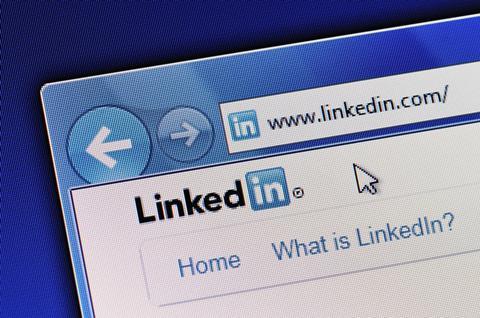Although a full detox is often impractical, there are basic steps you can follow to take control of your digital life. Katharine Freeland outlines five tips to get started
1. Break the connection
We all know people – especially lawyers – who cannot maintain a conversation for two minutes without pulling their phone out of their pocket. The pressure of the unread messages building up in the inbox, 24/7, 365 days a year, spikes anxiety levels and puts us into a constant ‘fight or flight’ mode. Hence the tapping, scrolling and urgent mutterings that risk blighting that special dinner in a restaurant, or a family day out. ‘Put physical distance between yourself and your phone – charge it downstairs, leave it behind when going out for dinner, set a rule of no phones at the dinner table. Your loved ones will thank you for it,’ advises Elaine Johnston, an NHS clinical psychologist with experience of dealing with professions with a high level of occupational stress.
2. Role model, not the latest model
Philip Sinel, name partner of Jersey firm Sinels Advocates, emphasises the importance of those at the top of the hierarchy setting the right tone (no pun intended) for more junior practitioners: ‘It is important for those leading the firm to be role models, and not endorse the “have you got my email” culture,’ he says. Sinel took a full digital detox on a recent holiday abroad; Christmas or work lulls may also provide opportunities for a personal reboot. Another option is building a ‘screen free’ day into your week to ensure quality time with friends or family. ‘We have a rule of no TV, no computer games, no phones (except in an emergency) on Sundays,’ says Rosalind Seagren, a senior solicitor at business insurance group Travelers. ‘It is amazing how much time you have when you are not using devices.’ Anecdotally, clients are often more understanding about the ringfencing of digital-free time than colleagues: ‘When at a previous firm I was called on Saturdays, at home at 11pm – and because my boss was working it was expected that I would be as well,’ says one associate, formerly at a transatlantic firm. ‘I even received work calls on a non-urgent matter during a retreat.’
3. Choose life
Eschewing the digital world for an extended period of time may be infeasible, but there is no reason why you cannot build mini-digital detoxes into your day – and, if you are anticipating a particularly busy period, before or after the rush. Although Skype meetings across continents are unavoidable, you could always choose to have a face-to-face meeting with Stewart down the corridor instead of picking up the phone. It establishes that all-important human connection and gets you moving as well.
4. Go outside
Go for a walk outside without a device. A forest is the optimum place for an unwind – but if you are in the office a turn around the block will do. Feel the wind on your face, breathe deeply, stand up straight and get the air into your lungs. Too much screen time cramps the body as well as the mind. You will work better if you remind yourself – regularly – that there is a real world out there. ‘Even going to get a drink of water – without your phone – during a busy spell lowers the stress levels,’ says Sinel.
5. Know the signs of addiction
Yes, phone (or device) addiction is a thing. ‘Nomophobia’, fear of being without a mobile phone, is not so much about the object itself but the compulsion to be connected to the online world. How do you know if your technology use is unhealthy? ‘Like other addictions it is knowing when to stop – there is a lot of work that not only could wait, but should wait,’ says Johnston. Know yourself – some people find it beneficial to check emails in the evenings to prioritise work for the next day, but for others this opens up a wormhole where work never ends. A major indicator of digital addition is disrupted sleep patterns – switching the devices off an hour before going to bed is not just for the kids.
Katharine Freeland is a freelance journalist

Up close on LinkedIn
Lawyers who run shy of engaging on Twitter by actually ‘tweeting’ are less taciturn on professional network site LinkedIn. Here many are active during the day, and at strangely unsocial hours. A quick glance down a LinkedIn contacts profiles list will show, along with standard profile photos, the odd contact picture on their wedding day – cravat and waistcoat, or veil or fascinator firmly in place. There are even a few who photograph their dinner as if this were a teen’s Instagram account.
Typically, professionals comment on each others’ posts without the caveat ‘views are my own’, and don’t get a corporate comms team involved before offering those views.
Are they right to be so relaxed? Let’s say morally, they are. As with civil servants and ministers, if you do not have a space where you can freely and widely debate matters related to your work, ill-considered outcomes can follow. As a space LinkedIn is also often self-policing when it comes to questions of decency.

But can you be too interesting? There is always the risk that a pronouncement strikes a much bigger chord than expected – a rant aimed at a few peers goes viral, and suddenly the senior partner takes an interest. Private messages to strangers lustily complimenting their appearance in their profile photo have become public – maybe those wedding photos are a way of warding off such exchanges.
There is no legal or regulatory difference between a post on Twitter or LinkedIn, and yet the latter is probably a safer space for professionals. That’s notable when it comes to fundraising for a charity to which the lawyer has a connection – personal stories may be told more comfortably because of the context in which they are shared.
LinkedIn members can control who sees their thoughts, but most lawyers do not do this. It is perhaps sad that no one says what they think without the ‘views own’ caveat. Who else’s would they be?






























No comments yet